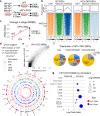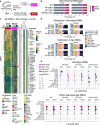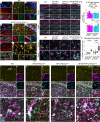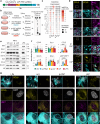Glial reactivity and cognitive decline follow chronic heterochromatin loss in neurons
- PMID: 40781223
- PMCID: PMC12334701
- DOI: 10.1038/s41467-025-61319-7
Glial reactivity and cognitive decline follow chronic heterochromatin loss in neurons
Abstract
In aging cells and animal models of premature aging, heterochromatin loss coincides with transcriptional disruption including the activation of normally silenced endogenous retroviruses (ERVs). Here we show that loss of heterochromatin maintenance and de-repression of ERVs result in a chronic inflammatory environment characterized by neurodegeneration and cognitive decline in mice. We identify distinct roles for HP1 proteins to ERV silencing where HP1γ is necessary and sufficient for H4K20me3 deposition and HP1β deficiency causes aberrant DNA methylation. Combined loss of HP1β and HP1γ results in loss of DNA methylation at ERVK elements. Progressive ERV de-repression in HP1β/γ DKO mice is followed by stimulation of the integrated stress response, an increase of Complement 3+ reactive astrocytes and phagocytic microglia. This chronic inflammatory state coincides with age-dependent reductions in dendrite complexity and cognition. Our results demonstrate the importance of preventing loss of epigenetic maintenance that is necessary for protection of postmitotic neuronal genomes.
© 2025. The Author(s).
Conflict of interest statement
Competing interests: The authors declare no competing interests.
Figures







References
MeSH terms
Substances
Grants and funding
LinkOut - more resources
Full Text Sources
Molecular Biology Databases
Research Materials

